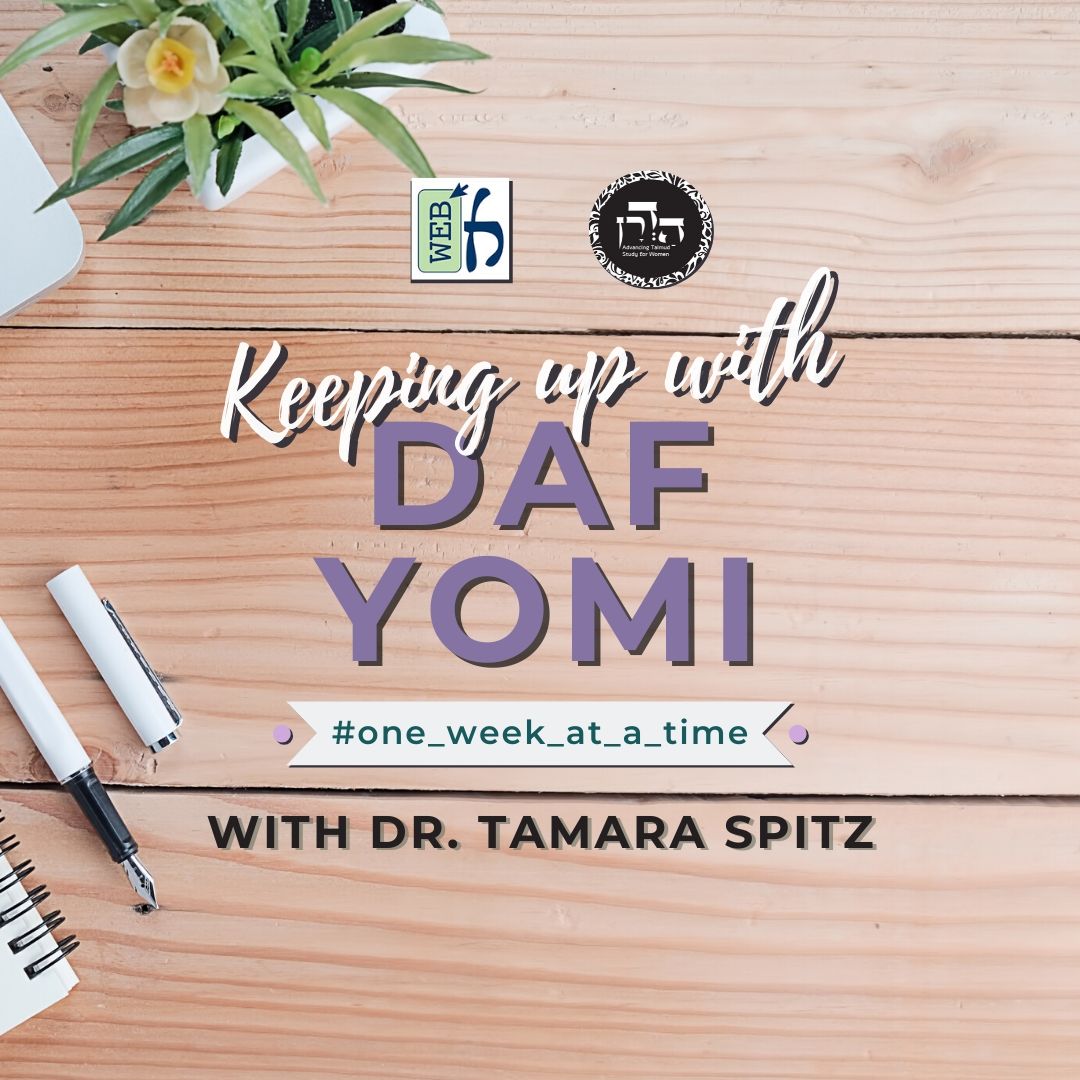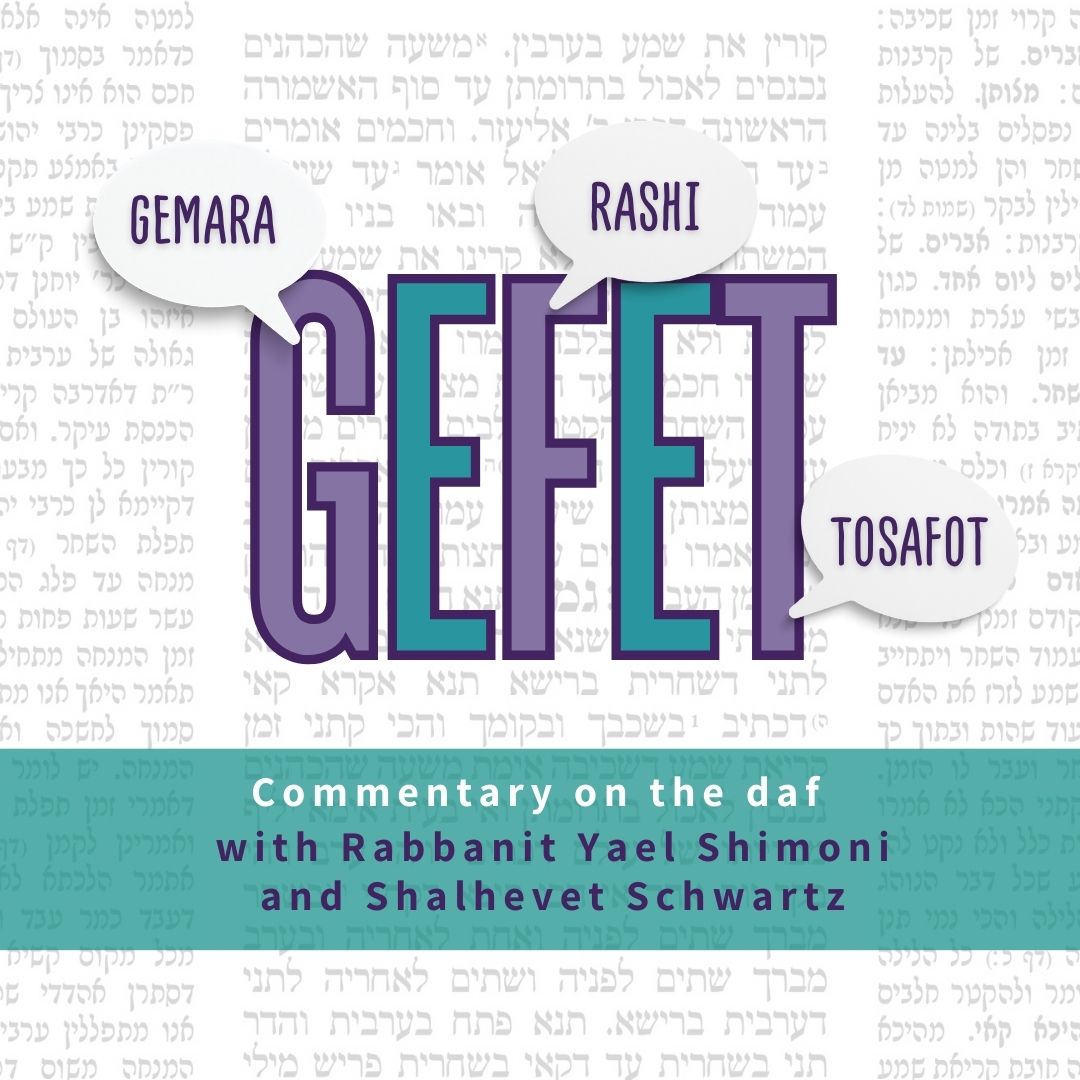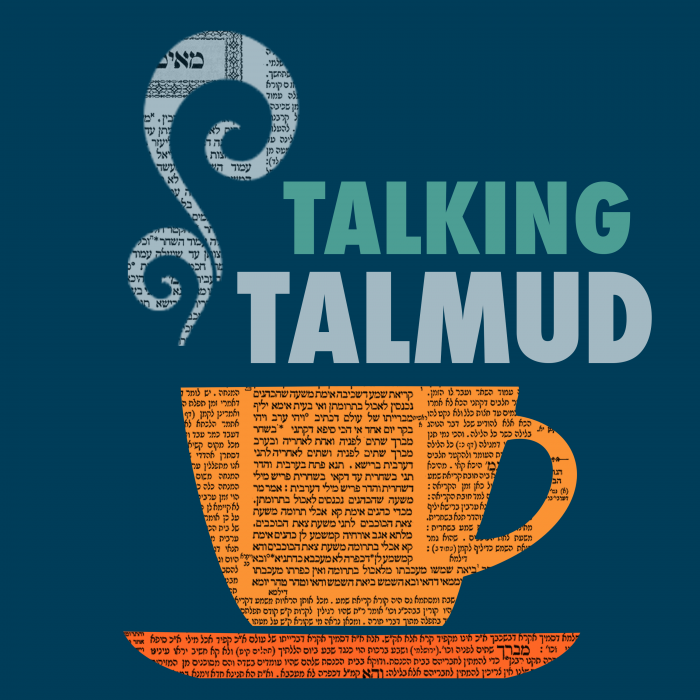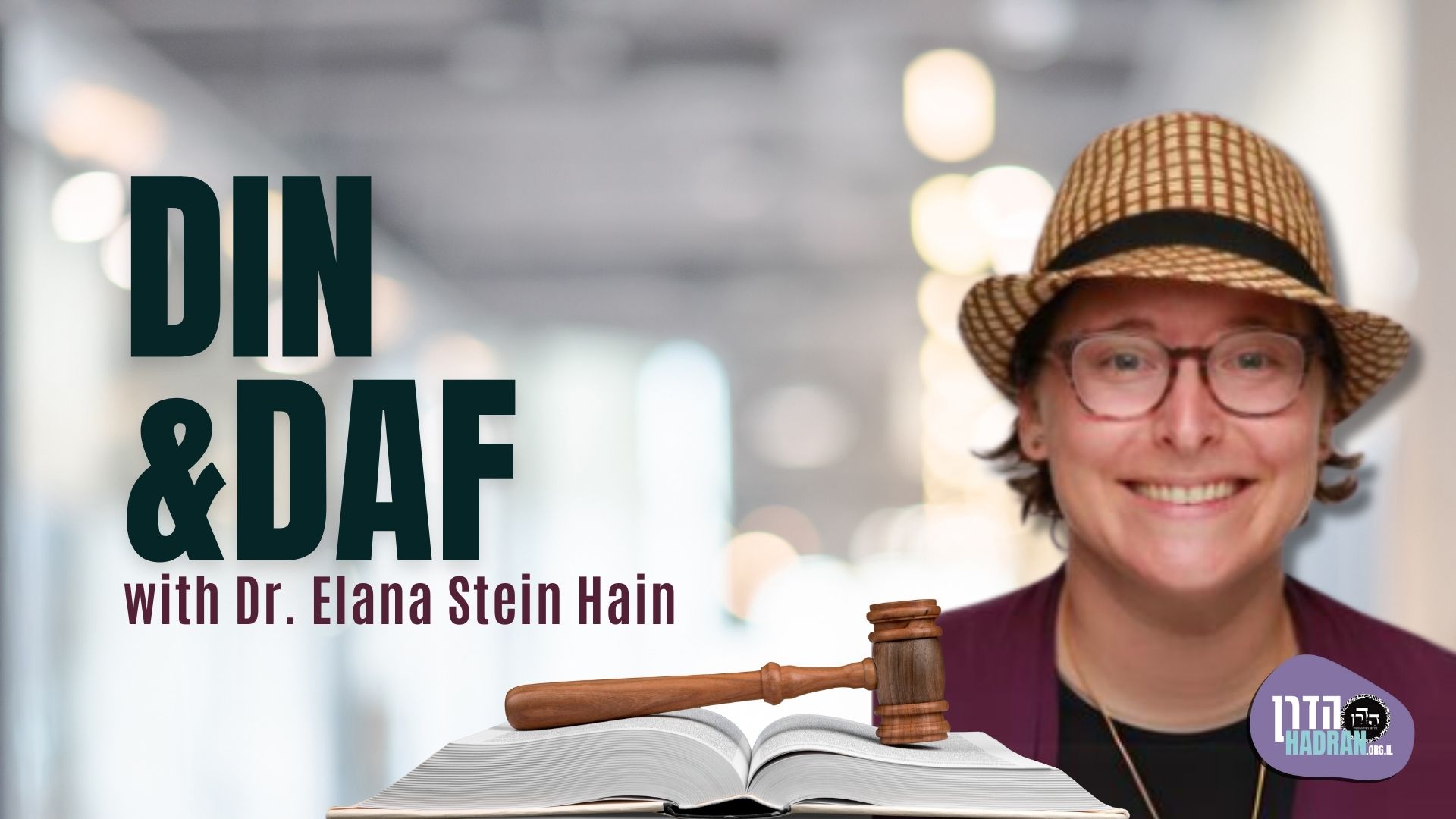Bava Batra 23
אָתוּ אוּמָּנֵי וְיָתְבִי תּוּתַיְיהוּ, וְאָתוּ עוֹרְבֵי אָכְלִי דְּמָא, וְסָלְקִי אַבֵּי תָאלֵי וּמַפְסְדִי תַּמְרֵי. אֲמַר לְהוּ רַב יוֹסֵף: אַפִּיקוּ לִי קוּרְקוּר מֵהָכָא. אֲמַר לֵיהּ אַבָּיֵי: וְהָא גְּרָמָא הוּא! אֲמַר לֵיהּ: הָכִי אָמַר רַב טוֹבִי בַּר מַתְנָה, זֹאת אוֹמֶרֶת: גְּרָמָא בְּנִיזָּקִין אָסוּר.
bloodletters would come and sit beneath them and perform their work there, and crows would come, eat the blood, and fly up to the palm trees and damage the dates. Rav Yosef said to the bloodletters: Remove these crowing birds from here, i.e., leave in order to avoid further damage. Abaye said to him: But it is an indirect action, as the bloodletters themselves are not damaging the dates. Rav Yosef said to him that Rav Tovi bar Mattana said as follows: That is to say that it is prohibited to cause even indirect damage.
וְהָא אַחְזֵיק [לְהוּ]! הָא אָמַר רַב נַחְמָן אָמַר רַבָּה בַּר אֲבוּהּ: אֵין חֲזָקָה לִנְזָקִין. וְלָאו אִיתְּמַר עֲלַהּ – רַב מָרִי אָמַר: בְּקוּטְרָא, וְרַב זְבִיד אָמַר: בְּבֵית הַכִּסֵּא?! אֲמַר לֵיהּ: הָנֵי, לְדִידִי – דַּאֲנִינָא דַּעְתַּאי, כִּי קוּטְרָא וּבֵית הַכִּסֵּא דָּמוּ לִי.
Abaye said to Rav Yosef: But they have established an acquired privilege to use that particular spot for their work. Rav Yosef replied: Doesn’t Rav Naḥman say that Rabba bar Avuh says: There is no acquired privilege of use in cases of damage, i.e., an established situation may not be allowed to continue in the event that damage results. Abaye inquired further: But wasn’t it stated with regard to that statement of Rav Naḥman that Rav Mari said it is referring specifically to smoke, and Rav Zevid said it is referring to a bathroom? In other words, this principle was stated specifically in the context of damage caused by these substances. Rav Yosef said to him: For me, as I am sensitive, these are like smoke and a bathroom to me, which is why I have the right to demand that the bloodletters leave.
מַתְנִי׳ מַרְחִיקִין אֶת הַשּׁוֹבָךְ מִן הָעִיר חֲמִשִּׁים אַמָּה. וְלֹא יַעֲשֶׂה אָדָם שׁוֹבָךְ בְּתוֹךְ שֶׁלּוֹ, אֶלָּא אִם כֵּן יֵשׁ לוֹ חֲמִשִּׁים אַמָּה לְכׇל רוּחַ. רַבִּי יְהוּדָה אוֹמֵר: בֵּית אַרְבַּעַת כּוֹרִין – מְלֹא שֶׁגֶר הַיּוֹנֶה. וְאִם לְקָחוֹ – אֲפִילּוּ בֵּית רוֹבַע, הֲרֵי הוּא בְּחֶזְקָתוֹ.
MISHNA: One must distance a dovecote fifty cubits from the city to prevent doves from eating seeds in the town. And a person should not establish a dovecote within his own property unless he has fifty cubits in each direction between the dovecote and the edge of his property. Rabbi Yehuda says that one must have surrounding the dovecote the area required for sowing four kor of seed on each side, which generally extends as far as a dove flies in a single flight. And if one bought the dovecote with the land, he has the acquired privilege of its use even if it has surrounding it only the area required for sowing a quarter-kav of seed [beit rova] around it, and he need not remove it from there.
גְּמָ׳ חֲמִשִּׁים אַמָּה – וְתוּ לָא? וּרְמִינְהִי: אֵין פּוֹרְסִין נִשְׁבִּין לְיוֹנִים, אֶלָּא אִם כֵּן הָיָה רָחוֹק מִן הַיִּשּׁוּב שְׁלֹשִׁים רִיס!
GEMARA: The Gemara asks: Must one distance a dovecote only fifty cubits from the city and no more? Is that as far as one can expect a dove to fly? And the Gemara raises a contradiction from a mishna (Bava Kamma 79b): One may spread out traps [neshavin] for doves only if this was performed at a distance of at least thirty ris, or four mil, which is eight thousand cubits, from any settled area, to avoid catching birds that belong to another. Apparently, doves fly a distance of thirty ris, whereas the mishna here states fifty cubits.
אָמַר אַבָּיֵי: מֵישָׁט שָׁיְיטִי טוּבָא, וּכְרֵסַיְיהוּ בַּחֲמִשִּׁים אַמְּתָא מַלְיָא. וּמֵישָׁט – שְׁלֹשִׁים רִיס וְתוּ לָא? וְהָתַנְיָא: וּבַיִּשּׁוּב – אֲפִילּוּ מֵאָה מִיל לֹא יִפְרוֹס! רַב יוֹסֵף אָמַר: בְּיִשּׁוּב כְּרָמִים.
Abaye said: Doves do fly great distances, which is why one must avoid catching others’ birds by keeping traps thirty ris away from settled areas. But as they eat along their way, their stomachs are filled after a distance of fifty cubits, at which point they will do no more damage to seeds. The Gemara asks: And do they fly only thirty ris and no more? But isn’t it taught in a baraita: And in a settled area, one may not spread out a trap even if the area under his control extends as far as one hundred mil in each direction? Rav Yosef says: That baraita is referring to a settled area of vineyards, i.e., a contiguous region of vineyards and gardens. In that case the doves pass from place to place even over a great distance.
רָבָא אָמַר: בְּיִשּׁוּב שׁוֹבָכִין. וְתִיפּוֹק לֵיהּ מִשּׁוּם שׁוֹבָכִין גּוּפַיְיהוּ! אִיבָּעֵית אֵימָא: דִּידֵיהּ, וְאִיבָּעֵית אֵימָא: דְּגוֹי, וְאִיבָּעֵית אֵימָא: דְּהֶפְקֵר.
Rava said: The baraita is referring to a settled area of dovecotes, i.e., where many dovecotes are distributed. The Gemara asks: And according to Rava, let the tanna derive that one may not establish a new dovecote there due to the other dovecotes themselves, as he will trap doves belonging to others. The Gemara answers: If you wish, say that this is referring to his own dovecotes. And if you wish, say it is referring to the dovecotes of a gentile, whose property one is not obligated to protect from harm. And if you wish, say it is referring to ownerless dovecotes.
רַבִּי יְהוּדָה אוֹמֵר: בֵּית אַרְבַּעַת כּוֹרִין וְכוּ׳. אָמַר רַב פָּפָּא, וְאִיתֵּימָא רַב זְבִיד: זֹאת אוֹמֶרֶת, טוֹעֲנִין לְלוֹקֵחַ וְטוֹעֲנִין לְיוֹרֵשׁ.
§ Rabbi Yehuda says that one must have surrounding the dovecote the area required for sowing four kor of seed on each side, which is as far as a dove flies in a single flight. And if one bought the dovecote with the land, he has the acquired privilege of its use. Rav Pappa said, and some say it was Rav Zevid: That is to say that a court issues a claim on behalf of a buyer, and issues a claim on behalf of an heir. This is referring to the halakha of taking possession. If one has been physically in possession of an item for a period of time, generally three years, this serves as proof that he is in fact the legal owner. This possession must be accompanied by a claim of how one acquired the item; he cannot simply state that no one protested his possessing the item for three years. Rav Pappa is saying that the court will lodge a claim on behalf of a buyer or heir that they acquired the item from someone who was the owner, just as here the court assumes that the previous owner of the dovecote came to an agreement with his neighbors that he may use it.
יוֹרֵשׁ – תְּנֵינָא: הַבָּא מִשּׁוּם יְרוּשָּׁה – אֵינוֹ צָרִיךְ טַעֲנָה! לוֹקֵחַ אִיצְטְרִיכָא לֵיהּ. לוֹקֵחַ נָמֵי תְּנֵינָא: לָקַח חָצֵר וּבָהּ זִיזִין וּגְזוּזְטְרָאוֹת – הֲרֵי זֶה בְּחֶזְקָתָהּ!
The Gemara asks: Why is it necessary for Rav Pappa to state this halakha? We already learn this with regard to an heir (41a): In the case of land that comes as an inheritance, one is not required to make a claim as to how the land came into his benefactor’s possession when one’s ownership of the land is challenged. The Gemara answers: It was necessary for him to state this halakha with regard to a buyer. The Gemara asks: With regard to a buyer as well, we learn this in a mishna (60a): If one bought a courtyard in which there are projections and balconies [ugzuztraot] extending into the public domain, this courtyard retains its presumptive status, i.e., the owner has the acquired privilege of their use, and the court does not demand their removal.
צְרִיכָא; דְּאִי אַשְׁמְעִינַן הָתָם גַּבֵּי רְשׁוּת הָרַבִּים – דְּאֵימוֹר כּוֹנֵס לְתוֹךְ שֶׁלּוֹ הוּא, אִי נָמֵי אַחוֹלֵי אַחוּל בְּנֵי רְשׁוּת הָרַבִּים גַּבֵּיהּ; אֲבָל הָכָא – לָא;
The Gemara answers: It was necessary for the tanna of the mishna to state this halakha in both cases, as, if he had taught us this only there, in that mishna, one might have said that it applies specifically with regard to a protrusion or a balcony that extends into the public domain, as one can say that perhaps it is a case where the seller had drawn back into his own land before adding the projections and balconies, and they in fact do not extend into the public thoroughfare. Alternatively, perhaps the public waived their right to him and allowed him to place them over the common area, as otherwise they would have protested. But here, where he causes damage to private individuals, one might have thought that the buyer does not have a privilege of use, and therefore the mishna teaches us otherwise.
וְאִי אַשְׁמְעִינַן הָכָא, דְּכֵיוָן דְּיָחִיד הוּא – אֵימָא: פַּיּוֹסֵי פַּיְּיסֵיהּ, אִי נָמֵי אַחוֹלֵי אַחֵיל גַּבֵּיהּ; אֲבָל רַבִּים, מַאן פַּיֵּיס וּמַאן שָׁבֵיק – אֵימָא לָא; צְרִיכָא.
And if he had taught this only in the mishna here, one might say that since the party potentially suffering damage is an individual, the owner of the dovecote appeased his neighbor by paying him to permit him to construct it. Alternatively, the neighbor might have waived his right to him. But in a case where damage is caused to the public, one might argue: Whom did he appease, and who yielded to him? Consequently, one might say that the purchaser does not retain the privilege of use. Therefore, it is necessary for the tanna to state the halakha in this case as well.
הֲרֵי הוּא בְּחֶזְקָתוֹ. וְהָא אָמַר רַב נַחְמָן אָמַר רַבָּה בַּר אֲבוּהּ: אֵין חֲזָקָה לִנְזָקִין! רַב מָרִי אָמַר: בְּקוּטְרָא, רַב זְבִיד אָמַר: בְּבֵית הַכִּסֵּא.
§ The mishna teaches that if one bought the dovecote with the land, he has the acquired privilege of use. The Gemara asks: But doesn’t Rav Naḥman say that Rabba bar Avuh says: There is no acquired privilege of use for cases of damage? Why should he retain his acquired privilege of use when his doves cause damage? Rav Mari said: Rav Naḥman’s statement is referring specifically to smoke, which causes serious damage, and that is why it overrides an acquired privilege. Rav Zevid said: It is referring to a bathroom, whose odor is particularly strong.
מַתְנִי׳ נִיפּוּל הַנִּמְצָא בְּתוֹךְ חֲמִשִּׁים אַמָּה – הֲרֵי הוּא שֶׁל בַּעַל הַשּׁוֹבָךְ. חוּץ מֵחֲמִשִּׁים אַמָּה – הֲרֵי הוּא שֶׁל מוֹצְאוֹ. נִמְצָא בֵּין שְׁנֵי שׁוֹבָכוֹת; קָרוֹב לָזֶה – שֶׁלּוֹ. קָרוֹב לָזֶה – שֶׁלּוֹ. מֶחֱצָה עַל מֶחֱצָה – שְׁנֵיהֶם יַחְלוֹקוּ.
MISHNA: With regard to a dove chick [nippul] that was found within fifty cubits of a dovecote, it belongs to the owner of the dovecote. If it was found beyond fifty cubits from a dovecote, it belongs to its finder. In a case where it was found between two dovecotes, if it was close to this one, it belongs to the owner of this dovecote; if it was close to that one, it belongs to the owner of that dovecote. If it was half and half, i.e., equidistant from the two dovecotes, the two owners divide the value of the chick.
גְּמָ׳ אָמַר רַבִּי חֲנִינָא: רוֹב וְקָרוֹב – הוֹלְכִין אַחַר הָרוֹב; וְאַף עַל גַּב דְּרוּבָּא דְּאוֹרָיְיתָא וְקוּרְבָא דְּאוֹרָיְיתָא – אֲפִילּוּ הָכִי, רוּבָּא עֲדִיף.
GEMARA: Rabbi Ḥanina says: When resolving an uncertainty with regard to the halakhic status of an item, e.g., a found item, if the status of the majority of like items indicates that it has one status but the item in question is proximate to a source that indicates otherwise, one follows the majority. And even though the halakha of majority applies by Torah law and the halakha of proximity also applies by Torah law, even so the majority is preferable.
מֵתִיב רַבִּי זֵירָא: ״וְהָיָה הָעִיר הַקְּרֹבָה אֶל הֶחָלָל״ – וְאַף עַל גַּב דְּאִיכָּא אַחֲרִיתִי דִּנְפִישָׁא מִינַּהּ!
Rabbi Zeira raises an objection from the Torah’s statement with regard to a murder victim where the identity of the murderer is unknown. In a case of this kind, the court measures the distances between the corpse and the nearby towns, in order to determine which town is closest and must consequently perform the rite of the heifer whose neck is broken. The verse states: “And it shall be, that the city that is nearest to the slain man, the Elders of that city shall take a heifer of the herd…and shall break the heifer’s neck” (Deuteronomy 21:3–4). And this town is chosen even though there might be another town that is larger in population than it. According to Rabbi Ḥanina, in a case of this kind one should follow the majority.
בִּדְלֵיכָּא. וְלֵיזִיל בָּתַר רוּבָּא דְעָלְמָא! בְּיוֹשֶׁבֶת בֵּין הֶהָרִים.
The Gemara answers: This verse is referring to a situation where there is no other town that is larger than that one. The Gemara asks: And still, if one follows the majority, why should the court follow the closest city? Let us follow the majority of the world, as most people are found elsewhere. The Gemara answers: This is referring to a case where the city sits in isolation between mountains, and therefore it is unlikely that the murderer arrived from elsewhere.
תְּנַן: נִיפּוּל הַנִּמְצָא בְּתוֹךְ חֲמִשִּׁים אַמָּה – הֲרֵי הוּא שֶׁל בַּעַל הַשּׁוֹבָךְ; וְאַף עַל גַּב דְּאִיכָּא אַחֲרִינָא דִּנְפִישׁ מִינֵּיהּ! בִּדְלֵיכָּא.
The Gemara continues to discuss the issue of majority as opposed to proximity. We learned in the mishna: With regard to a dove chick that was found within fifty cubits of a dovecote, it belongs to the owner of the dovecote. And as the mishna does not make a distinction between different cases, it indicates that this is the halakha even though there is another dovecote that is larger than the proximate one in terms of number of birds. This shows that closeness, not majority, is the determining factor. The Gemara answers: This is referring to a case where there is no other dovecote in the area.
אִי הָכִי, אֵימָא סֵיפָא: חוּץ מֵחֲמִשִּׁים אַמָּה – הֲרֵי הוּא שֶׁל מוֹצְאוֹ. וְאִי דְּלֵיכָּא, וַדַּאי מֵהָהוּא נְפַל! הָכָא בְּמַאי עָסְקִינַן – בִּמְדַדֶּה, דְּאָמַר רַב עוּקְבָא בַּר חָמָא: כׇּל הַמְדַדֶּה – אֵין מְדַדֶּה יוֹתֵר מֵחֲמִשִּׁים.
The Gemara asks: If so, say the latter clause of the mishna: If it was found beyond fifty cubits from a dovecote, it belongs to its finder. And if there is no other dovecote in the area, it certainly fell from that dovecote. How, then, can it be given to the finder? The Gemara answers: With what are we dealing here? We are dealing with a chick that hops from place to place but does not yet fly. As Rav Ukva bar Ḥama says: With regard to any creature that hops, it does not hop more than fifty cubits. Consequently, any bird found within fifty cubits of a dovecote is assumed to have come from there. If it is farther away than that, it likely came from elsewhere or was dropped by travelers.
בָּעֵי רַבִּי יִרְמְיָה: רַגְלוֹ אַחַת בְּתוֹךְ חֲמִשִּׁים אַמָּה, וְרַגְלוֹ אַחַת חוּץ מֵחֲמִשִּׁים אַמָּה – מַהוּ? וְעַל דָּא אַפְּקוּהוּ לְרַבִּי יִרְמְיָה מִבֵּי מִדְרְשָׁא.
Rabbi Yirmeya raises a dilemma: If one leg of the chick was within fifty cubits of the dovecote, and one leg was beyond fifty cubits, what is the halakha? The Gemara comments: And it was for his question about this far-fetched scenario that they removed Rabbi Yirmeya from the study hall, as he was apparently wasting the Sages’ time.
תָּא שְׁמַע: נִמְצָא בֵּין שְׁנֵי שׁוֹבָכוֹת; קָרוֹב לָזֶה – שֶׁלּוֹ, וְקָרוֹב לָזֶה – שֶׁלּוֹ; וְאַף עַל גַּב דְּחַד מִינַּיְיהוּ נְפִישׁ מֵחַבְרֵיהּ! הָכָא בְּמַאי עָסְקִינַן – שֶׁשְּׁנֵיהֶן שָׁוִין. וְלֵיזִיל בָּתַר רוּבָּא דְעָלְמָא! הָכָא בְּמַאי עָסְקִינַן –
The Gemara further suggests: Come and hear the mishna: In a case where it was found between two dovecotes, if it was close to this one, it belongs to the owner of this dovecote; if it was close to that one, it belongs to the owner of that dovecote. The Gemara comments: And this is the halakha even though one of them is greater in number of birds than the other one. Apparently, one rules based on proximity, not majority. The Gemara explains: With what are we dealing here? We are dealing with a situation where the two dovecotes are equal in size. The Gemara asks: But even so, why should one follow the closer dovecote? Let us follow the majority of the world, as there are many other dovecotes besides these, and the number of doves they contain is greater. The Gemara responds: With what are we dealing here?

























